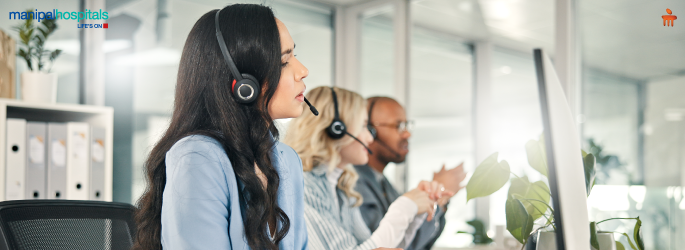
Whenever any joint hurts and the bones ache, there is confusion about how it affects daily life. "Is it arthritis or osteoporosis?" Many people are unsure about the difference between arthritis and osteoporosis and fear the worst if their body begins to change. But really, while both can cause pain in a person and put physical limitations on them, arthritis and osteoporosis are two very different ailments. So here we'll put forth that all-important difference; discuss symptoms, explain how one affects one's health, and then look into some expert help from our trusted orthopaedic doctor in Ghaziabad- always keeping in mind the human interest side.
Synopsis
- The Basics: What Are Arthritis and Osteoporosis?
- Arthritis: A Closer Look at the “Joint Disease”
- Osteoporosis: The Silent Bone Disease
- Joint Pain vs Bone Loss: Spotting the Difference
- Rheumatic Conditions: More Than Just Aching Joints
- Diagnosis: The First Step to Better Health
- Treatment and Living Well: Support in Ghaziabad
- Prevention: Looking After Your Bones and Joints
- Conclusion
The Basics: What Are Arthritis and Osteoporosis?
"Arthritis" is an umbrella term encompassing over 100 rheumatic disorders and joint disorders. The main feature is inflammation of the joints that causes.
-
Swelling.
-
Redness.
-
Pain.
The most common are osteoarthritis and rheumatoid arthritis; however, many types exist.
On the contrary, osteoporosis is a bone disorder characterised by a slow loss of bone density. Bones tend to become brittle, weak, and highly prone to fractures-even under trivial falls or bumps. Pain is hardly ever produced by osteoporosis-unless it is a fracture.
Distinguishing arthritis from osteoporosis is important because treatment, lifestyle changes, and prevention strategies differ for each.
Both conditions are common among older adults, but anyone can develop them—children are not excluded from certain types of arthritis.
Arthritis: A Closer Look at the “Joint Disease”
If you’ve ever wrung your hands at cold weather or struggled to open jars, you may have felt some joint pain—but true arthritis means persistent problems that interfere with daily life.
Symptoms of arthritis could be anything from:
-
Swollen and tender joints.
-
Stiffness in the morning hours for more than half an hour.
-
Redness or heat around joints.
-
Less mobility or less ability to move through the joints.
The common types of arthritis are:
-
Osteoarthritis: It is a wear-and-tear injury that damages the protective cartilage mainly in the knees, hips, spine, and fingers.
-
Rheumatoid arthritis: An autoimmune condition in which the body's immune system attacks the joint tissue.
The risk factors for this include family history, injuries, obesity, and even some infections. Our orthopaedic surgeons in Ghaziabad deal with those pesky joint pains as they diagnose and treat rheumatic disorders, helping patients to gain comfort and movement.
Osteoporosis: The Silent Bone Disease
Unlike arthritis, osteoporosis is often called silent until a fracture occurs. The class of bone diseases characterised by low bone mass and deterioration of bone tissue describes it for you. The process is gradual-bones lose minerals and density and become brittle. Women post-menopause, persons with poor feeding or less intake of calcium, smokers, and the aged stand a high risk.
Signs of osteoporosis could be:
-
Sudden back pain (due to a spinal fracture).
-
Loss of height over time.
-
Stooped posture or ‘dowager’s hump’.
-
Bones that break more easily.
There’s no swelling or redness, and, crucially, osteoporosis does not cause joint pain before a fracture occurs. That’s why regular bone density tests are essential, especially for those in at-risk groups. Our orthopaedic doctors in Ghaziabad specialise in osteoporosis care, offering bone health assessments and fracture prevention plans.
Joint Pain vs Bone Loss: Spotting the Difference
Understanding joint pain vs bone loss is central to distinguishing arthritis from osteoporosis. Joint pain, swelling, and stiffness point strongly toward arthritis, while gradual bone loss and fragility, often without pain, signal osteoporosis.
Here’s an easy osteoporosis and arthritis comparison:
|
Aspect |
Arthritis |
Osteoporosis |
|
Main Site Affected |
Joints |
Bones |
|
Cause |
Inflammation, wear & tear |
Loss of bone mass |
|
Main Symptoms |
Pain, swelling, stiffness |
Fractures, height loss |
|
Pain Without Injury |
Yes |
Rarely |
|
Swelling/Redness |
Common |
Absent |
|
Visible Signs |
Joint deformity |
Spinal curvature |
The difference between arthritis and osteoporosis is vital not only for correct diagnosis but also for peace of mind. Many people fear that osteoporosis is causing their joint pain, but that’s usually arthritis.
Rheumatic Conditions: More Than Just Aching Joints
It’s worth noting that there is overlap: people can have both arthritis and osteoporosis, especially as they get older.
Rheumatoid arthritis, for example, can increase the risk of osteoporosis due to inflammation and medications used to treat it. Likewise, immobilisation after a fracture or long-standing joint disease may worsen bone loss.
Recognising the complexity is why seeking help from our orthopaedic experts in Ghaziabad is so valuable—they take a holistic approach.

Diagnosis: The First Step to Better Health
Distinguishing arthritis from osteoporosis begins with an honest conversation about symptoms, lifestyle, and family history. Our doctor might suggest:
-
Blood tests (for inflammation or autoimmune markers).
-
X-rays (for joint damage).
-
Bone density scans (DEXA or QCT for osteoporosis).
-
MRI or ultrasound (for soft tissue around joints).
Early diagnosis, open communication, and a personalised care plan are the key to living better with any bone or joint disease.
Treatment and Living Well: Support in Ghaziabad
Treatment varies widely depending on whether it’s arthritis or osteoporosis. For arthritis, medicines range from painkillers to targeted “biologics.” Exercise, physical therapy, joint injections, and—occasionally—surgery help maintain movement and comfort.
For osteoporosis, specialists focus on:
-
Slowing bone loss.
-
Improving bone density.
-
Preventing fractures.
Calcium and vitamin D supplements, exercise, and certain medications (bisphosphonates, denosumab) are commonly prescribed. Fall-prevention strategies, lifestyle changes, and ongoing monitoring are also vital.
The most important message? You do not have to face these conditions alone. The supportive team of our experts in Ghaziabad are at hand to provide guidance, expert diagnosis, and compassionate care for every patient.
Prevention: Looking After Your Bones and Joints
There’s much you can do to keep your joints healthy and bones strong:
-
Stay active, choose joint-friendly exercise.
-
Eat a balanced diet with plenty of calcium, vitamin D, and protein.
-
Look after your weight.
-
Don’t smoke or drink excessively.
-
Talk to our doctor about screening.
Conclusion
Both arthritis and osteoporosis are easier to manage—and less likely to progress—when caught early. Regular visits to our orthopaedic experts are an investment in lifelong mobility and independence. Book an appointment today!
FAQ's
Arthritis affects the joints, causing pain and swelling; osteoporosis affects the bones, making them weak and fracture-prone.
Yes, it’s possible, especially as you age—careful diagnosis is essential.
Through blood tests, X-rays, bone scans, and clinical history.
Both can be managed effectively with medicine, lifestyle changes, and support from our orthopaedic specialists.
Our orthopaedic doctors in Ghaziabad provide advanced, personalised care for all joint and bone issues.





















 5 Min Read
5 Min Read















